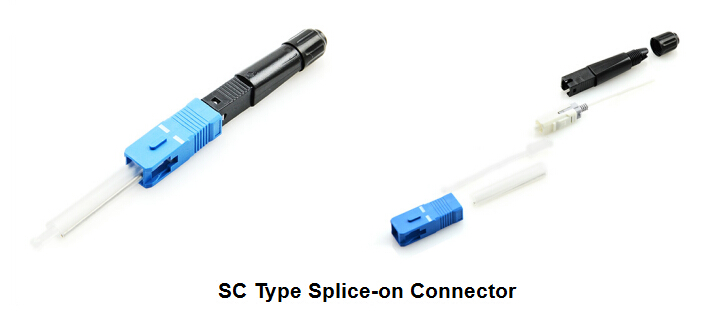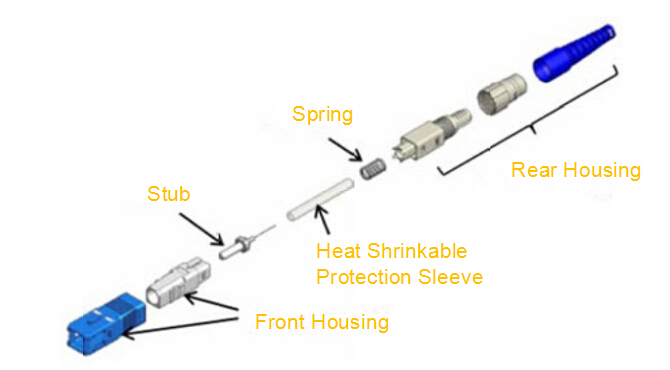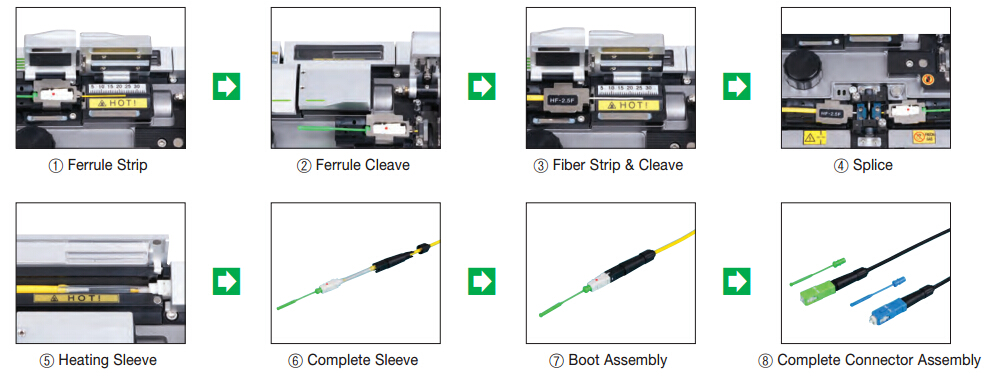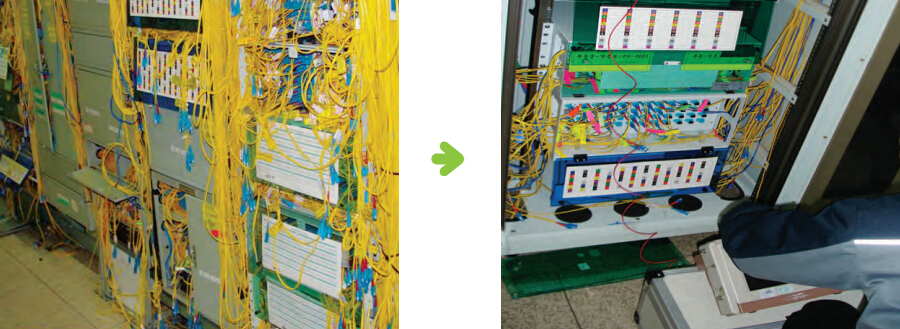The prevalence of fiber optic cable has become a trend which is embraced globally, since optical fiber offers unsurpassed advantages. Fiber optic cables are sensitive to excessive pulling, bending, twisting, crushing and other impact forces, for any such damage may alter the fiber property and may pose threats to its performance. So, optical cable should be stored and handled in an appropriate way. This article offers recommendations for proper storage and handling of fiber optic cable.
Fiber optic cable can be basically categorized into indoor fiber optic cable and outdoor fiber optic cable. Indoor cables are used exclusively within buildings whereas outdoor cables are employed in outside plant applications. Here are some factors to consider for indoor and outdoor storage.
- Always keep the reel tag that comes with the cable. There is vital information on the tag which indicates the cable description, attenuation, bandwidth and cable length. All these are valid identification of the fiber optic cable for future traceability.
- Store fiber optic cable reels standing on both flanges, or held through center. Never store a cable reel sitting on one flange surface, which will result in possible future cable damage when unwinding.
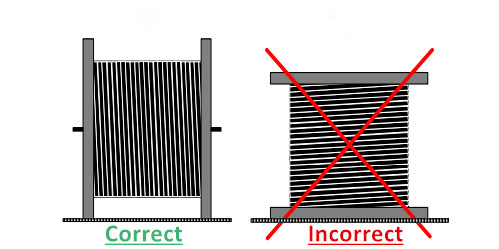
- Once rewind the fiber optic cable to another reel, the diameter of the new reel shall be compatible with the minimum bending radius of the cable. And the original cable label details should be copied to the new reel.
- In no circumstances shall any indoor cable boxes or reels be stored outside or in a harsh environment. Instead, indoor cables should be stored in a dry and UV protected location, such as a room or container.
- Choose a site for storage with no risk of excessive humidity, falling objects, chemical spills (oil, grease,etc.) open flames or excessive heat. Elements like moisture and other contamination should also be considered when picking storage location.
Requirements listed below are applicable to both outdoor and indoor/outdoor fiber optic cables. Ends of the cables shall be sealed during storage.
- All fiber optic cable reels including part used should be stored upright. Always store the reel in areas with flat firm surfaces. And use appropriate devices to secure reels to prevent reel movement during storage.
- Avoid storage areas that are susceptible to flooding, or that could damage the cable, such as sharp, uneven terrain.
- When the cable reel is too heavy to lift manually, it must be moved upright by lifting the cable with a forklift or reel mover. Never drop a cable reel from any height during transportation or use.
- When unloading from a vehicle, use either the tail-lift / elevator (if fitted) or a suitable mechanical aid such as a forklift truck. Never let reels drop from the vehicle to the ground.

- Before de-reeling cable, the reel should be visually inspected for possible damage caused during storage.
Fiber optic cable is prone to damages due to improper handling and such damages can degrade the cable performance. Therefore the following suggestions may be useful to handle fiber optic cable properly.
1. Store the cable drums in an upright position, resting it vertically on cable flange edge not in the horizontal position. The flanges of reels shall not be interleaved, and reels must not be lifted by their flanges.
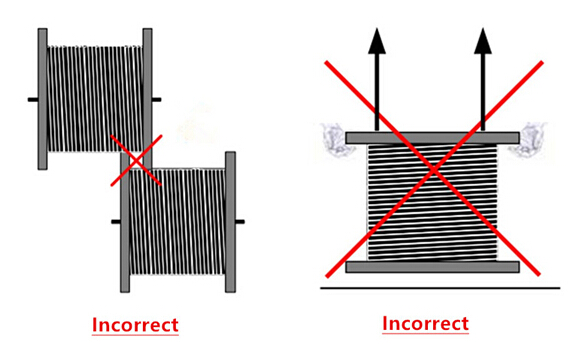
2. The rolling of the drum in the direction of the arrow decreases the chance for the cable to loosen its wind on the drum. However, you should notice that when pulling the fiber optic cable off the drum to install the cable, the arrow will point in the opposite direction to the rotation of the drum. (see the picture below).
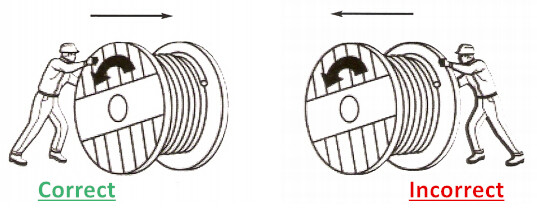
3. When moving or handling the drum by a forklift, one should operate it in a proper manner to avoid any damage to fiber optic cable. The fork should not have any direct contact with the cable jacket.

4. While removing fiber optic cable from the drum. It is essential to avoid any reverse bending or twisting that may ultimately deteriorate fiber performance.
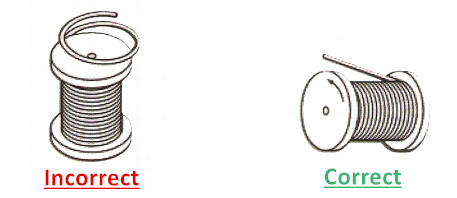
5. Always grounding optical fiber in figure 8 configuration, which allows for pulling of cable in both directions from a central location. It is necessary to protect the figure 8 coil form passers by. The figure 8 coil should be at least 10M by 5M. So what if the longer cable is required to be unreeled? The overwhelming weight of the coil may damage the cable at the bottom. In this case, try to spread the cable out in several figure 8 coils.
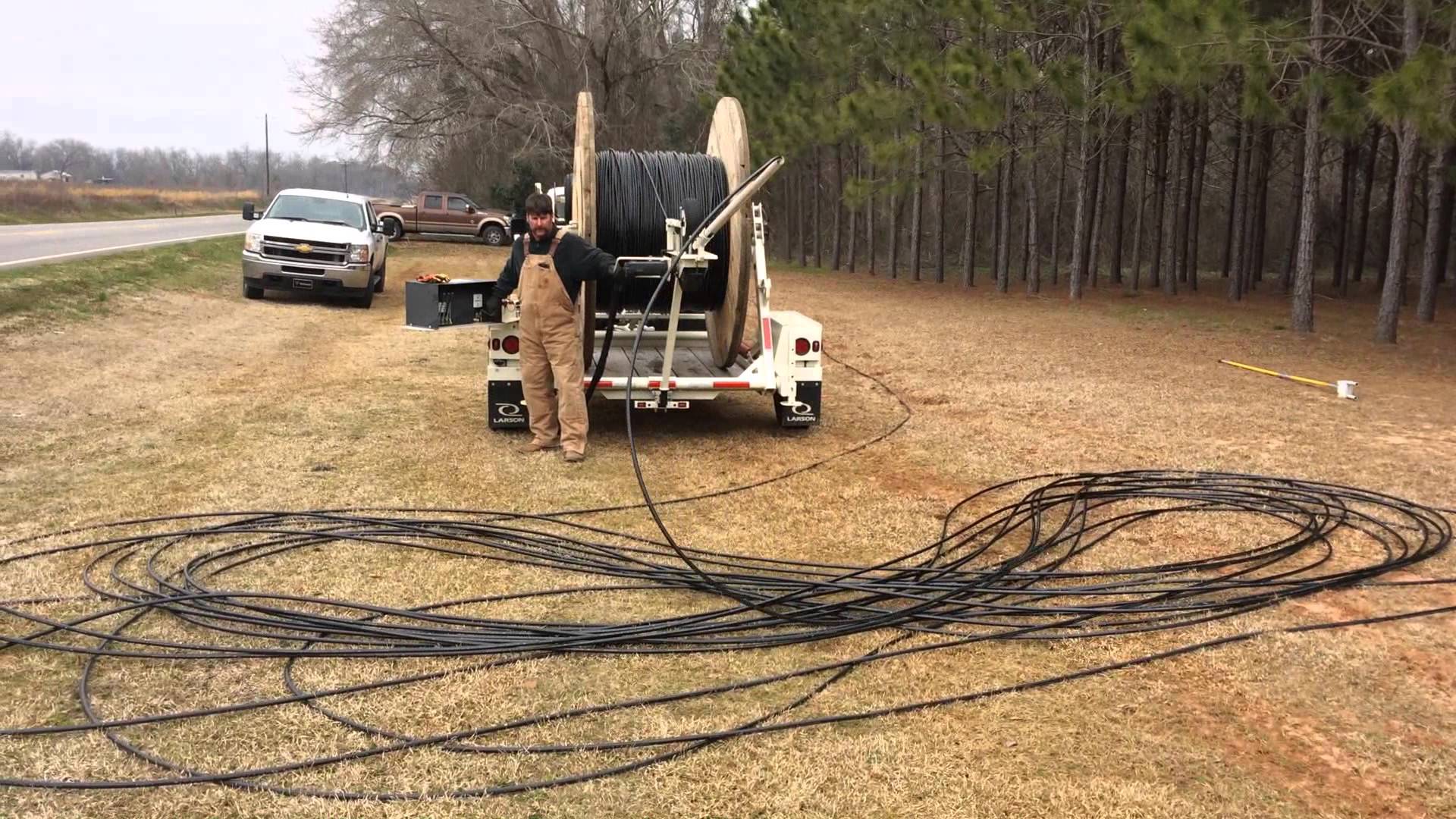
Proper storage and handling of fiber optic cable help to decreas chances for accidental damages, yet increases longevity of fiber optic cable. This article simply offers a recommended guideline for optical fiber storage and handling, while it is always wise to consult a professional for your unique application.
